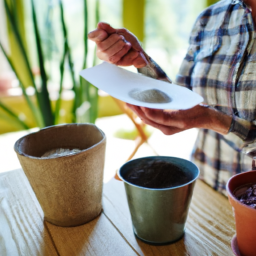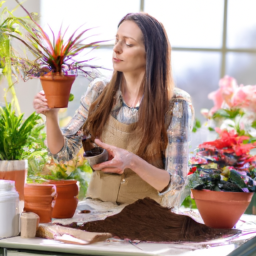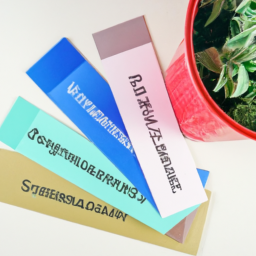
Are your plants not thriving as you expected? It might be time to take a closer look at the potting mix you’re using. Choosing the right potting mix for your plants is crucial to their overall health and growth. With so many options available, it can be overwhelming to determine which one is best suited for your specific plants. In this blog post, we will explore the importance of selecting the right potting mix and provide you with some helpful tips to ensure your plants receive the ideal growing medium they need. So, let’s dive in and discover how to give your plants the best start possible!
Understanding the Importance of Choosing the Right Potting Mix for Your Plants
When it comes to gardening, choosing the right potting mix for your plants is crucial for their overall health and growth. Just like humans, plants require a balanced diet to thrive, and the potting mix serves as their primary source of nutrients, water retention, and aeration. In this guide, we will walk you through the step-by-step process of selecting the perfect potting mix for your beloved plants.
1. Assessing Your Plant’s Needs
Before diving into the world of potting mixes, it’s essential to understand the specific needs of your plants. Different plants have different requirements when it comes to moisture retention, drainage, and nutrient levels. Take a closer look at your plant’s natural habitat and try to replicate those conditions as closely as possible.
For example, if you have succulents or cacti, they thrive in well-drained soil with low moisture retention. On the other hand, tropical plants prefer a potting mix that retains moisture and provides excellent drainage. By understanding your plant’s needs, you can narrow down the options and make an informed decision.
Additionally, consider the stage of growth your plant is in. Seedlings and young plants often require a lighter mix with more aeration, while mature plants may benefit from a denser mix that retains moisture for longer periods.
2. Understanding Potting Mix Components
Now that you have a better understanding of your plant’s needs, let’s delve into the components of a potting mix. A good potting mix should consist of a blend of organic matter, inorganic materials, and amendments that provide essential nutrients and promote healthy root development.
Organic matter, such as peat moss or coconut coir, helps with water retention and provides aeration to the roots. It also adds necessary nutrients to the mix. Inorganic materials, such as perlite or vermiculite, improve drainage and prevent compaction. These materials also lighten the mix, making it easier for roots to penetrate.
Amendments, such as compost or aged manure, enrich the potting mix with additional nutrients. They act as natural fertilizers and enhance the overall fertility of the mix. It’s important to strike a balance between these components to create an ideal potting mix for your plants.
3. Choosing the Right Potting Mix
Now that you are equipped with the knowledge of your plant’s needs and the components of a potting mix, it’s time to select the right mix for your plants. Here are a few options to consider:
All-Purpose Potting Mix: This type of mix is suitable for a wide range of plants, including vegetables, herbs, and flowering plants. It usually contains a balanced blend of organic matter, inorganic materials, and amendments, making it versatile and suitable for most plants.
Succulent and Cacti Mix: If you have succulents or cacti, opt for a mix specifically formulated for these types of plants. These mixes have excellent drainage properties and low moisture retention, mimicking the arid conditions these plants prefer.
Seed Starting Mix: When starting seeds, it’s crucial to provide them with a light and well-aerated mix. Seed starting mixes are usually finer in texture and contain less organic matter. They promote healthy germination and root development.
Orchid Mix: Orchids have unique requirements when it comes to potting mixes. They need a mix that provides excellent drainage, aeration, and moisture retention. Orchid mixes often contain bark chips, sphagnum moss, and perlite to create the ideal environment for these delicate plants.
Remember, when choosing a potting mix, always read the label and ensure it aligns with your plant’s specific needs. Don’t be afraid to experiment and find the perfect mix that works best for your green companions.
By understanding your plant’s needs, the components of a potting mix, and selecting the right mix accordingly, you are setting your plants up for success. A well-chosen potting mix will provide the necessary nutrients, water retention, and aeration, creating an optimal environment for your plants to thrive and flourish.

Factors to Consider When Selecting a Potting Mix for Different Types of Plants
Choosing the right potting mix for your plants is crucial for their overall health and growth. Different types of plants have different requirements when it comes to soil composition, drainage, and nutrient availability. By understanding these factors, you can ensure that your plants thrive in their pots or containers. In this article, we will discuss the key considerations when selecting a potting mix for various types of plants.
1. Plant Type and Growth Stage
The first factor to consider is the type of plant you are growing and its current growth stage. Some plants, such as succulents and cacti, prefer well-draining soil with minimal organic matter. On the other hand, leafy greens and flowering plants thrive in nutrient-rich potting mixes that retain moisture. Consider the specific needs of your plant species and choose a potting mix that suits their requirements.
Additionally, the growth stage of your plant also influences the choice of potting mix. Seedlings and young plants need a lighter mix that promotes root development, while mature plants may benefit from a mix that provides more stability and nutrient availability.
Take the time to research the specific needs of your plant type and growth stage to make an informed decision about the potting mix.
2. Drainage and Water Retention
Proper drainage is essential for preventing waterlogged soil and root rot. Most plants prefer a potting mix that allows excess water to drain freely. Sandy or perlite-based mixes are excellent choices for plants that require excellent drainage. These mixes allow water to flow through while still retaining enough moisture for the plants to absorb.
However, some plants, like tropical species, prefer a potting mix with higher water retention. These mixes typically contain more organic matter, such as peat moss or coconut coir, which can hold moisture for longer periods. If your plant requires consistent moisture, opt for a potting mix that retains water well.
Consider the watering needs of your plant and choose a potting mix that strikes the right balance between drainage and water retention.
3. Nutrient Content
The nutrient content of the potting mix is crucial for the overall health and growth of your plants. Different plants have varying nutrient requirements, and it’s essential to provide them with the necessary elements for optimal growth.
Some potting mixes come pre-fertilized, containing a balanced blend of essential nutrients. These mixes are suitable for a wide range of plants and provide a good foundation for healthy growth. However, some plants may have specific nutrient needs that are not fulfilled by generic mixes.
If you are growing plants with specific nutrient requirements, consider using specialized potting mixes or amending the mix with organic fertilizers or slow-release pellets. Conduct a soil test to determine the nutrient deficiencies in your mix and adjust accordingly.
Choosing the right potting mix for your plants is a crucial step towards their success. By considering factors such as plant type and growth stage, drainage and water retention, and nutrient content, you can create an ideal environment for your plants to thrive. Remember to regularly monitor the moisture levels, check for signs of nutrient deficiencies, and make adjustments as needed. With the right potting mix, your plants will flourish and bring beauty to your indoor or outdoor space.

How to Identify and Avoid Common Mistakes in Choosing a Potting Mix for Your Plants
Introduction
Choosing the right potting mix for your plants is crucial for their overall health and growth. With so many options available in the market, it can be overwhelming to make the right choice. In this article, we will discuss common mistakes that people make when selecting a potting mix and provide you with a step-by-step guide to avoid them.
Understanding the Needs of Your Plants
Before diving into the world of potting mixes, it is essential to understand the specific needs of your plants. Different plants have different requirements when it comes to moisture retention, drainage, and nutrient levels. By knowing your plants’ needs, you can make an informed decision while choosing the potting mix.
Consider factors such as the type of plant, its native environment, and its growth stage. For example, succulents require well-draining soil, while tropical plants thrive in moisture-retentive mixes. Researching your plants’ preferences will help you narrow down the options and avoid potential mistakes.
Additionally, take into account the pH requirements of your plants. Some plants prefer acidic soil, while others thrive in alkaline conditions. Understanding these preferences will ensure that your potting mix provides the right environment for your plants’ roots to flourish.
Avoiding Common Mistakes
1. Not Checking the Ingredients
One of the most common mistakes people make is not checking the ingredients of the potting mix. Many commercially available mixes contain a high percentage of peat moss, which can lead to poor drainage and compaction over time. It is crucial to look for mixes that have a balanced combination of organic matter, such as peat moss, coconut coir, or compost, along with materials like perlite or vermiculite for improved drainage.
Furthermore, avoid potting mixes that contain synthetic fertilizers or pesticides, as they can harm your plants in the long run. Opt for organic potting mixes that are free from harmful chemicals and provide a healthy growing environment for your plants.
Always read the label and check for the ingredients before purchasing a potting mix. This will help you make an informed decision and avoid potential issues down the line.
2. Ignoring the Drainage Needs
Proper drainage is vital for the health of your plants’ roots. Ignoring the drainage needs can lead to waterlogged soil, root rot, and ultimately, the death of your plants. When choosing a potting mix, ensure that it has excellent drainage properties.
Look for mixes that contain materials like perlite, vermiculite, or sand, which help improve drainage. These materials create air pockets in the soil, allowing excess water to drain away, preventing waterlogging.
On the other hand, if you have plants that require more moisture retention, such as ferns or orchids, opt for mixes that have higher water-holding capacity. These mixes usually contain organic matter like peat moss or coconut coir, which retain moisture for longer periods.
3. Overlooking Nutrient Requirements
Nutrients play a crucial role in the growth and development of plants. Overlooking the nutrient requirements of your plants can hinder their overall health and productivity. When choosing a potting mix, consider its nutrient content.
Some potting mixes come pre-fertilized, while others require additional fertilization. If you opt for a pre-fertilized mix, ensure that it contains a balanced combination of macro and micronutrients. However, keep in mind that these nutrients may deplete over time, and you may need to supplement them with regular fertilization.
If you choose a mix without added fertilizers, make sure to incorporate slow-release or organic fertilizers to provide your plants with the necessary nutrients. Regularly monitor the nutrient levels in your potting mix and adjust the fertilization accordingly.
Conclusion
Choosing the right potting mix is essential for the overall health and success of your plants. By understanding your plants’ needs, checking the ingredients, considering drainage requirements, and addressing nutrient needs, you can avoid common mistakes and provide an ideal growing environment for your plants. Remember to research and experiment with different potting mixes to find the perfect match for your plants. Happy gardening!
Let’s wrap up what we learned
Choosing the right potting mix for your plants is crucial for their overall health and growth. With so many options available in the market, it can be overwhelming to know which one to choose. But fear not, because in this blog post, we will guide you through the process of selecting the perfect potting mix for your beloved plants.
First and foremost, it’s important to understand that different plants have different needs when it comes to soil. Some plants thrive in well-draining soil, while others prefer moisture-retaining mixtures. Before making a purchase, take into consideration the type of plants you have and their specific requirements. For instance, succulents and cacti prefer a gritty mix that allows excess water to drain quickly, preventing root rot. On the other hand, tropical plants like ferns and orchids require a mix that retains moisture and provides good aeration. Once you’ve determined your plants’ needs, you can choose a potting mix that suits them best. Remember, investing in the right potting mix will ensure your plants stay healthy and vibrant, so don’t hesitate to do your research and ask for advice from local nurseries or gardening communities.
Q&A Corner:
Q1: What is potting mix and why is it important for my plants?
A1: Potting mix, also known as potting soil or growing medium, is a specially formulated blend of organic matter and minerals that provides essential nutrients, aeration, and drainage for plants grown in containers. It is important because it creates an ideal environment for root development, water retention, and nutrient absorption, ensuring healthy growth and thriving plants.
Q2: How do I choose the right potting mix for my plants?
A2: When choosing a potting mix, consider the specific needs of your plants. Factors such as plant type, water requirements, and preferred pH levels should be taken into account. Look for potting mixes labeled for the specific plant types you are growing, such as cacti and succulents, orchids, or vegetables. Additionally, ensure the mix has good drainage properties, is free from pests, and is made from high-quality organic materials.
Q3: Can I make my own potting mix instead of buying it?
A3: Yes, making your own potting mix is an option if you prefer a more customized blend. It allows you to control the ingredients and tailor the mix to the specific needs of your plants. Common components of homemade potting mixes include peat moss, perlite, vermiculite, compost, and various organic matter. However, it requires careful research and experimentation to ensure the mix provides adequate nutrition, drainage, and aeration for your plants.
Q4: How often should I change the potting mix in my containers?
A4: The frequency of changing potting mix depends on various factors such as plant type, container size, and growth rate. As a general guideline, it is recommended to replace the potting mix every one to two years. However, if you notice signs of poor drainage, root rot, or nutrient deficiencies, it may be necessary to change the mix sooner. Regularly inspect your plants and containers to determine if the potting mix needs refreshing or amending.
Q5: Are there any alternatives to traditional potting mix?
A5: Yes, there are alternative options to traditional potting mix. Some gardeners opt for soilless mixes, which are made from materials like coconut coir, composted bark, or peat moss. These mixes provide excellent drainage and aeration while reducing the risk of soil-borne diseases. Hydroponic systems use nutrient-rich water instead of potting mix, allowing plants to grow directly in a water-based solution. Additionally, some plants can be grown using specialized mediums like rockwool, perlite, or clay pellets. Consider the specific needs of your plants and explore these alternatives if they align with your gardening goals.

James Wong is a renowned ethnobotanist, plant scientist, and local television presenter. With a passion for demystifying plant science, he is known for translating complex botanical concepts into practical advice for everyday plant enthusiasts. James’s expertise spans from traditional gardening to cutting-edge plant technologies, making his insights accessible and informative.


